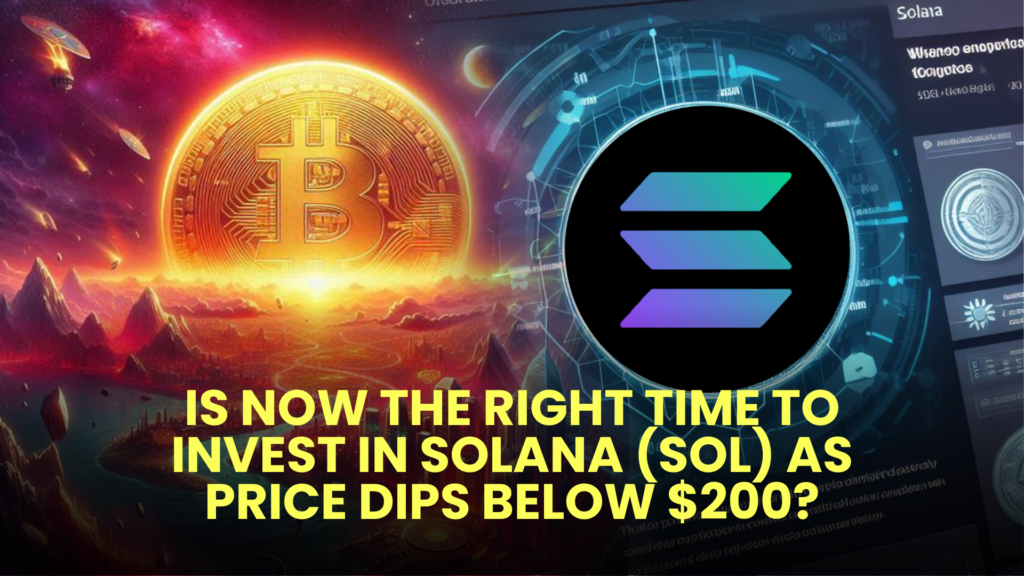
Discovering the Right Time to Buy Solana (SOL)
As the global market gradually bounces back from a recent downturn, the cryptocurrency market reflects this hesitant positivity. Bitcoin is facing challenges surpassing the $70,000 mark, with other cryptocurrencies, including those within the Solana network, also going through a slow period. Solana altcoins have a combined market capitalization of $225.1 billion. Recently, Solana (SOL) reached a peak of $175.48 within the past week, sparking optimism among investors about the possibility of exceeding the $200 threshold. Yet, a bearish trend has emerged, as the current market price remains under $200. This leads us to the crucial inquiry: Is it the right time to buy Solana?
Current Market Performance of Solana (SOL)
Solana’s (SOL) current price stands at $159.28, showing a small drop of 0.07% in the last 24 hours and a larger decrease of 3.66% in the last seven days. Nevertheless, SOL has exhibited a favorable pattern on a monthly basis, with an increase of 3.30%. The crypto has a prominent spot in the market, valued at $73.39 billion, placing it fifth among all cryptos, according to CoinMarketCap. Solana’s trading volume in the past day hit $1.37 billion. Despite current fluctuations, Solana’s value stays notably under its all-time high of $260.06 reached on November 7, 2021, showing a drop of 38.52% from its highest point.
Technical Analysis of Solana (SOL)
The technical indicators for Solana demonstrate mixed sentiment. Majority of moving averages in the short-term indicate a bearish trend. The Exponential Moving Averages (EMA) in the short-term is at 164.12, 164.61, and 163.52, all pointing at a sell signal.
- In the same way, the Simple Moving Averages (SMA) for the same periods signal a sell.
- In contrast, long-term moving averages tell a different story, offering an optimistic sentiment. Both 50-day EMA and 50-day SMA suggest a buy.
- Similarly, the 100-day and 200- day EMAs and SMAs also indicate buying.
The difference in short-term and long-term signals indicates that although Solana may experience short-term bearish pressure, its long-term prospects are still promising.
The RSI is at 45.92, showing that there are no signs of being overbought or oversold.
Additional oscillators also fluctuate near the neutral zone, further supporting the absence of a distinct directional pattern.
However, some indicators like the Commodity Channel Index (CCI) at -125.53 suggest a buying opportunity, whereas the MACD level at 0.50 indicates a sell.
The Fibonacci pivot points highlight critical support and resistance levels. The immediate support level is at 157.70, while resistance is noted at 196.71. Breaking the resistance at 196.71 could propel Solana towards the next resistance levels at 227.92 and 298.14, marking a significant bullish breakout.
Conclusion: Is It Time to Buy Solana?
The decision to buy Solana (SOL) depends on your investment timeframe and risk tolerance, taking into consideration the current market conditions and technical indicators. The short-term looks uncertain because of current bearish indicators and neutral oscillators.
But the long-term moving averages and crucial support levels suggest that Solana might be a good investment opportunity if it surpasses the $200 threshold and holds steady.
For long-term investors, current prices could be seen as an opportunity to buy, especially if they have confidence in Solana’s ability to bounce back and surpass its former peaks. However, short-term traders need to stay alert and wait for more evident buy signals before participating in the market.
It is crucial to remain informed and carefully analyze both technical indicators and broader market trends in Solana before making investment decisions, despite the signs of recovery in the market.


